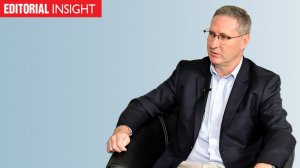The International Energy Agency’s (IEA’s) most recent report on the electricity sector includes a troubling section on Africa’s recent underperformance in this regard.
In the section, the authors highlight that per-person electricity demand across Africa has been stagnant for three decades, making the continent a worrying outlier in electricity demand trends. As of 2023, 600-million people, or more than 40% of the African population, lacked access to electricity, mostly in sub-Saharan Africa.
In stark contrast to Africa’s flatlining performance, the authors note that electricity use per capita has risen rapidly over the past 30 years in India and Southeast Asia, with positive implications for economic development and growth.
In 1990, the average electricity consumption per person in Africa exceeded that of Southeast Asia by 40% and India’s by 65%, the reports states.
However, recent decades have witnessed a significant surge in electricity demand and supply in India and Southeast Asia, accompanied by rapid economic development and prosperity in these regions.
Southeast Asia overtook Africa in per capita electricity consumption in 1995, and India achieved the same milestone in 2008 and, by 2023, African consumption of 530 kWh a person was half that of India and 70% lower than that recorded in Southeast Asia.
Moreover, Africa’s per capita consumption figure falls to only 190 kWh once South Africa is excluded. This, despite the country being a key reason for the continent’s weak recent demand performance, with record loadshedding last year triggering a 4% year-on-year slump in South Africa’s domestic demand.
Although electricity demand in Africa overall increased by 2% last year, which was marginally higher than the year before, the IEA only expects per capita electricity consumption to recover to 2010 to 2015 levels by the end of 2026 at the earliest.
This is a devastating position when considering not only the prevailing backlog, but that Africa’s population is set to grow rapidly to make up one-fifth of the world’s population by 2030. Potential demand is, thus, massive.
It is far from clear, though, how the current backlogs will be met, let alone how sufficient supply can be developed to support growth, development and industrialisation.
For the period 2024 to 2026, the IEA is forecasting a 4% average yearly growth in total African electricity demand, which is more than double the mean growth rate observed for the 2015 to 2023 period. About 60% of this growth in demand is to be met by expanding renewables, the remaining mostly by natural gas.
Such growth is wholly insufficient, and the IEA argues, rightly, that the international community needs to work together with African governments to facilitate urgent progress, without which the continent’s economic and climate goals will remain out of reach.
It’s also time for African governments to play their part by outlining consistent and achievable policy pathways supportive of massively upscaled investment – investment that is geared towards affordable universal access, rather than the creation of small islands of electricity wealth in seas of poverty.
EMAIL THIS ARTICLE SAVE THIS ARTICLE ARTICLE ENQUIRY
To subscribe email subscriptions@creamermedia.co.za or click here
To advertise email advertising@creamermedia.co.za or click here











